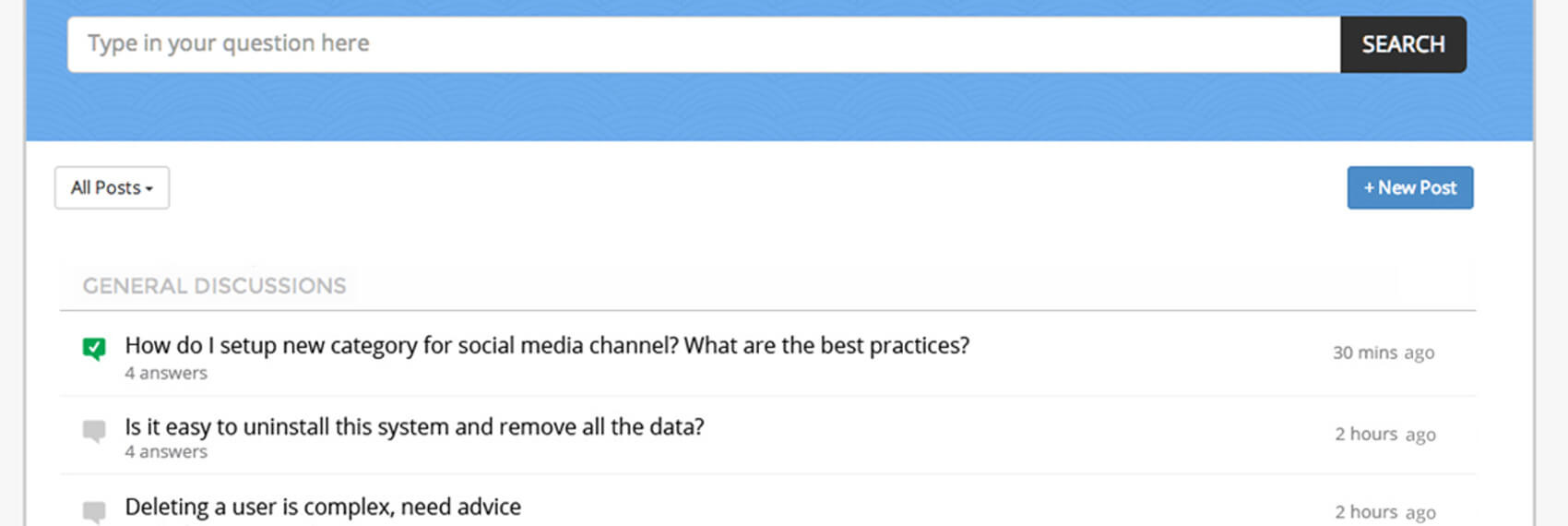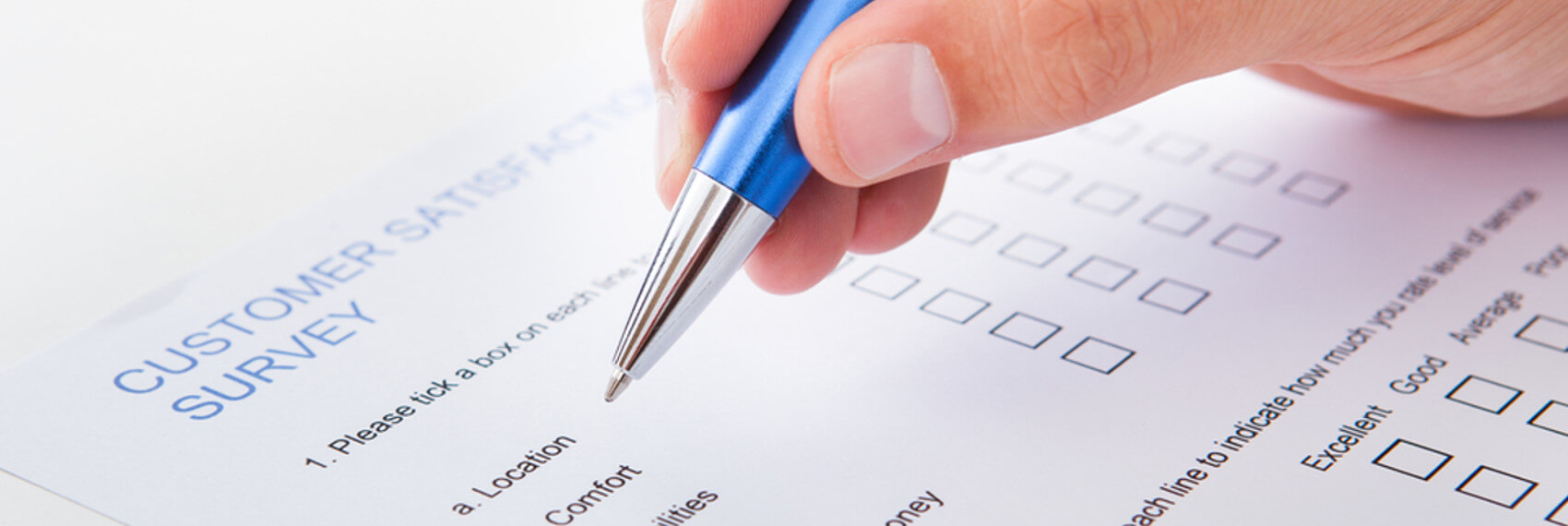The voice of the online customer is taking on an increasingly important role when it comes to improving websites and apps. So web analysts and digital marketeers are making more and more use of tools in order to collect feedback from the user. But what type of feedback tool should you use, for which type of use?
You can successfully use web statistics and other quantitative analysis tools to map the behaviour of a user of your website or app, but they don’t always answer the ‘why?’ question. Why does a user do what he does?
For this reason digital marketeers are increasingly collecting qualitative user feedback from users, so that you really can learn from the user experience, and not just map “touch” and viewing behaviour.
Why user feedback?

User feedback is vital if you want to gain insight into how users experience your product, company, and digital services. With the right feedback you can improve websites and apps. In this way you can achieve higher online sales, but also cost savings, because you are better placed to service your online customers.
Furthermore feedback is a good indicator of customer satisfaction and loyalty. Besides identifying bugs and sticking points in the online journey, you can also find out what (potential) customs like about your website, and why they choose your company.
- Collect unlimited feedback
- ■
- Free 14 day trial
5 types of user feedback tools
There are a variety of ways you can collect feedback from users and customers. Think of the popularity of social media and comparison websites, where people express their opinion on websites, apps, (online) products and services. There are also lessons to be learned from the conversations that people have with the webcare team or chat service. This often comprises feedback that has not been specifically requested, but which you can obtain from the analysis of a variety of sources.
There are also ways in which you can offer people the possibility of giving instant feedback on their online experience, at the moment when it really counts on the website or app.
For example if someone gets stuck while placing an order, or is looking for an online solution for his or her problem. You can obtain the feedback instantly at the critical moment, for example by using click behaviour, or by offering the chance to give feedback via a prominent feedback button which is present everywhere on the site or in the app.
In this blog I have divided five types of tools you can use for collecting this sort of feedback into various categories.
- Website feedback forms
- Community feedback
- Visual feedback
- Webshop reviews
- Traditional surveys
These are tools with which you can obtain instant feedback from the customer or user of the website or the app (at the critical moment), or which enable you to send an invitation to them to share their opinion, after the purchase.
1. Website feedback forms
These are the familiar feedback forms which you will often see on a website. They are mostly used via the well known floating feedback buttons on the side or at the bottom of the screen. They can also appear automatically, based on click or browsing behaviour, for example if you leave an ordering page.
The feedback forms themselves often comprise a number of elements, such as a score (for example a star-rating, NPS or Customer Satisfaction score), a number of feedback categories (e.g. “bug”, “compliment”, “spelling mistake”), and the option of making an open comment.

The forms are mostly loaded in an overlay (modal) over the page, or they open inwards from the bottom or the side of the screen.
Known providers of these sorts of forms include Feedbackify and Qualaroo. These tools often offer limited scope for analysing and reporting on the feedback data assembled.
2. Community feedback
Community feedback tools offer the option of a feedback forum. That is to say: you automatically submit the feedback that you collect with these tools to a public forum. Here other users can discuss the feedback together, or for example vote on the topic in order to signal that more people have the same problem or idea.

You will see that marketeers frequently use these tools in order to collect suggestions and ideas, for example for the features that they offer in the online services or mobile app.
The feedback is collected the same way as in the case of the first category (website feedback forms). So the feedback is mostly obtained via a feedback button which you use to open a feedback form. Within the form you can select a category, for example “suggestion” or “technical problem”, and give an explanation. In some cases you also see an overview of other popular topics which are being discussed in the forum.
In terms of propositions these tools don’t generally differ very greatly from each other. The only difference is that some tools place a bit more emphasis on customer support, whilst other tools emphasise the ‘crowd sourcing’ element more (voting on each others’ ideas).
The usual suspects in this field are GetSatisfaction, Uservoice and IdeaScale.
3. Visual feedback
Visual feedback tools are also frequently referred to as usability feedback tools. Marketeers and other user experience specialists use this type of feedback tool to improve the usability of a page. With these tools you can point to specific page elements (such as a form, image, button, paragraph) in order to give feedback there. The tools then save a screenshot of the page element with the user’s feedback.

The visual feedback tools are frequently used on new websites and apps in order to quickly identify bugs or items that are unclear, for example in the design. Depending on which tool you use you will receive screenshots via email and/or a secure management environment.
Popular tools in this genre are UserSnap and BugHerd. If you are handy with Javascript you can also use an open source tool like Feedback.js.
4. Webshop reviews
Another popular method for collecting online feedback – frequently used among webshops – is the Webshop review. With this type of tool you send the customer an invitation via email, so that they can leave an evaluation behind after buying a product. The invitation to express an opinion is also contained in the confirmation email that you receive following purchase.

If you click on the invitation you are taken to a review form. The assessment often takes the form of a star rating from 1 to 5, and an open comment field. Here people can indicate how satisfied they are with the purchase from the webshop involved.
The question with this sort of tool is often whether it really is a good idea for marketeers to show the ratings and qualitative input from customers, or the Google Stars which are then shown with your Google Adwords (via Google Shopping). Because the reviews are mostly published on an “independent” third party site, where they are then subsequently indexed by Google.
Naturally the reviews also contribute to winning the confidence of consumers who are orientating themselves online. The more confidence you radiate, the higher your online conversions. More than half of all consumers allow themselves to be influenced by online reviews.
Well known tools which facilitate these options are Trustpilot, eKomi and FeeFo.
For a comprehensive list of review tools click here.
5. Traditional surveys

The traditional survey tools also offer options for collecting feedback on the website or app from the user. Naturally these tools can be used for a wide variety of purposes. In some cases, just like the first type of feedback tools, (website feedback forms) they offer the option of obtaining feedback via a feedback button, but they also regularly take the form of an emailed invitation to express an opinion on the website.
The traditional survey tools are above all well known for the long lists of questions, which are not always what you are hoping for if you just want to quickly place an order online. But fortunately many marketeers are increasingly limiting the number of questions.
Because there are not many people who are willing to spend the time it takes to answer twenty questions about using the website…
In contrast to website feedback tools, the traditional survey tools are often somewhat less suitable for focusing your feedback form on browse and click behaviour in a targeted way.
On the other hand traditional survey tools are more suitable for creating a more complex routing of your question list, for example with “conditional statements” (if the user selects option A for question 1 then the user gets question 3 next). But in any case, as I just said, you shouldn’t construct question lists that are too long.
Some well known names for these types of tools are SurveyMonkey, Qualtrics and TypeForm.
Would you like to see a more extensive overview of feedback collection tools? In a previous blog I compared 31 different feedback tools, with which you can obtain feedback from your users. Take advantage of it…
Ready to see Mopinion in action?
Want to learn more about Mopinion’s all-in-1 user feedback platform? Don’t be shy and take our software for a spin! Do you prefer it a bit more personal? Just book a demo. One of our feedback pro’s will guide you through the software and answer any questions you may have.







